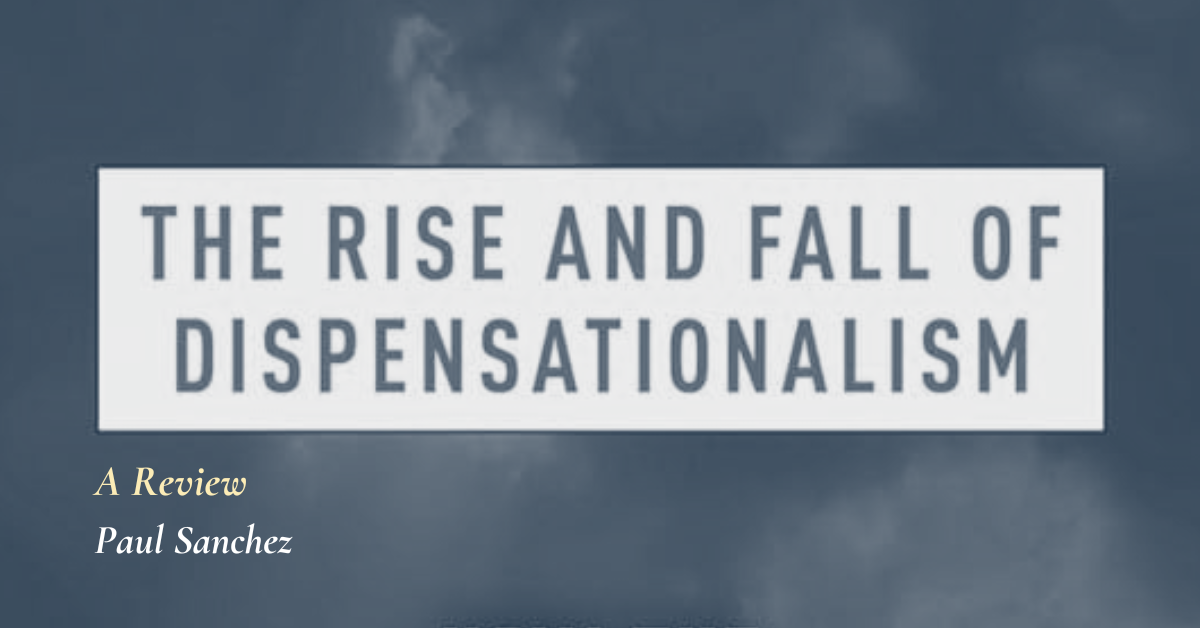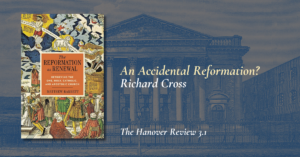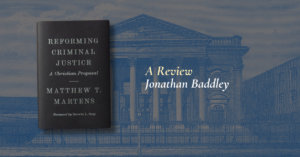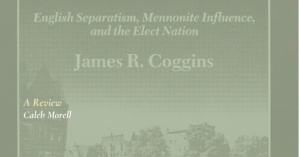The Rise and Fall of Dispensationalism: How the Evangelical Battle Over the End Times Shaped a Nation. Daniel G. Hummel. Grand Rapids, MI: Eerdmans Publishing, 2023. 400 pages. $29.99
With The Rise and Fall of Dispensationalism, Daniel Hummel has produced an insightful book in which he presents a rise and fall narrative for one of the crucial theological systems in evangelical Christianity over the last century and a half. As Hummel argues, dispensationalism became far more than a theological system when it emerged as the core of a new religious subculture in America, but consequential to his argument is the idea that it began as a system and declined as a system. Hummel offers substantial treatment for all the well-known figures of dispensationalism—John Nelson Darby, Cyrus I. Scofield, D. L. Moody, Lewis Sperry Chafer, and Hal Lindsey—along with several lesser-known names who were also pivotal to the movement like Philip Mauro and John Walvoord, among others. Hummel creates considerable appeal by uncovering how multifaceted this story truly is. He reveals the surprising complexity of the movement, from its roots within the Exclusive Brethren of the British Isles to a notable Presbyterian contingent in America, and eventually toward the independent fundamentalist sphere of American Christianity. But this is not a book only about dispensational theology. Hummel uses the story of what he calls the new premillennialism as “a window into the fascinating tapestry of religion, theology, culture, politics, and social change in America” (4). And it is fascinating.
Summary
Hummel argues that dispensationalism was much more than an eschatological view (9–11). In twentieth-century America, it became a full-orbed biblical and global-political hermeneutic. Dispensationalism provided a new theory of time and of history and it offered a distinctive theology of the church. A significant part of this system was John Nelson Darby’s sharp dualism between the church and Israel—between heaven and earth. Darby contended that the church belonged to a heavenly kingdom while Israel with its own set of divine promises and special agenda belonged to the earth (23–24, 202). This raised several notable implications that ranged from the nature of Christian ethics to Zionism, a new geo-political orientation that became particularly significant when Israel became a modern state in 1948. Rigorously tethered to a “literal” common sense method of biblical interpretation on one hand, along with a potentially complex theological system on the other, Hummel highlights the power of the system when he notes that once people had learned the system it was hard to unsee it (73–78).
Dispensationalism created its own subculture within American evangelicalism. Even among many who never embraced an entire system, dispensationalism introduced “key concepts in the religious culture of the day” (27). Hummel insightfully argues that from the time it was introduced in the nineteenth-century, American evangelicals embraced dispensationalism on their terms (37–40). While embracing ideas like the rapture and the church-Israel binary, they often rejected other ideas like the strict denominational separationism of Darby and other early proponents. Many others tended to simplify the complex ideas that were inherent in Darby’s original system for a more generic evangelical theology paired with a basic dispensationalist eschatology.
More than anyone else, Cyrus I. Scofield transformed new premillennialism into a full religious identity. His Scofield Reference Bible, published by Oxford University Press in 1909 became the signature text for the movement (130). Its textual notes allowed readers to follow the system from text to text across the biblical canon, which offered a powerful apologetic. Hummel aptly states, “If Brethren seeded North America with new premillennial teachings, Scofield was the one to reap the harvest” (138).
Hummel draws out numerous surprises from the history of dispensationalism. Although known by historians, Hummel shows definitively that some of the common stereotypes are misleading. To many, the word dispensationalist evokes an image of the rural American South, but especially in the movement’s early decades the opposite was true. Dispensationalism originally took root as a northern and at least partially urban phenomenon, situated prominently in the Great Lakes basin. Nowhere was it stronger than in the new metropolis of Chicago, followed later by Southern California. Moreover, early dispensationalism was more diverse than is often assumed. Pentecostals, for example, played a notable part in this story even as Pentecostalism eventually fractured the movement (120–121). One of the most famous preachers of the 1920s, the spirited Aimee Semple McPherson who pastored Angelus Temple in the heart of Los Angeles, belonged to the dispensational sphere. Hummel argues that she was “received warmly” by national dispensationalist leaders like J. Frank Norris and William Bell Riley (168).
Hummel suggests that two streams of evangelical antimodernists became cobelligerents and joined together to oppose a common theological enemy (163). To be a fundamentalist did not necessarily imply that one embraced dispensationalism, nor were all dispensationalists of like mind with the emerging fundamentalist coalition. One significant example is found at Bob Jones College which intentionally left dispensational theology out of the school’s doctrinal statement with the hope of creating a pan-fundamentalist cooperation (184–188). These two groups intersected and overtime they merged to the point that they became difficult to distinguish.
Hummel carefully traces the institutional development of dispensational theology. From its early collegiate base at Moody Bible Institute and the Bible Institute of Los Angeles to its significant establishment at Dallas Theological Seminary and later at Talbot School of Theology, dispensationalism developed what he calls a “scholastic” arm. From the beginning dispensationalism had a popular character to it, but the scholastic arm of the movement grew to provide it with educated leaders as well as institutional support for biblical scholarship and broader academic engagement. However, simultaneous with the growth of the academic arm, a broader cultural dispensationalism spread like wildfire through the books of Hal Lindsey, most notably The Late Great Planet Earth, and later through the Left Behind books by Tim LaHaye. Ironically, according to Hummel, the rapid growth of pop dispensationalism also carried with it the seeds of the movement’s decline (262–265). Even as Americans consumed books and films that spread dispensationalist ideas to an ever-widening audience, the scholastic wing failed to produce leaders or to raise interest in their distinctive theology beyond the growing popular consumption. Hummel argues, “Dispensational theology was in a free fall, even as pop dispensationalism was conquering American culture” (265).
Analysis
The Rise and Fall of Dispensationalism is a well-conceived work and offers an overall compelling argument. The broader narrative of a rise and decline of this intriguing movement is persuasive. However, “decline” seems to be a more fitting word than “collapse,” which he eventually applies to the movement and particularly its scholastic wing (301). Even if dispensationalism has continued to decline into the twenty-first century, collapse might be an overstatement in light of the ongoing institutional and ecclesial persistence of dispensationalism. Dallas Theological Seminary is the most significant example, but Liberty University and several smaller schools like Mission University (formerly Baptist Bible College) in Springfield, Missouri continue to affirm and teach dispensationalism. Beyond the academy, congregations like the megachurch Shadow Mountain Community Church led by David Jeremiah, who also produces the popular Turning Point Radio program, continues to advocate for dispensational theology. Smaller dispensationalist churches and parachurch ministries dot the landscape from California to New England. In the San Francisco Bay Area, a network of Bible churches supports The Cornerstone Bible College and Seminary, which has seen record enrollment in recent years and remains dispensationalist. Dispensationalism endures a part of the theological landscape in America.
Even as dispensationalism has undoubtedly declined in recent decades, Hummel rightly demonstrates how the system provided “at least four generations of white conservative Protestants… with a theological framework to read the Bible and understand the world” (5). Perhaps most importantly, Hummel demonstrates that dispensationalism provided explanatory power to large numbers of Christians over a span of many years. At a time when modern scholarship was discrediting the biblical text and many evangelical Christians had lost sight of the Bible’s unity, dispensationalism attempted to give Christians a unified Bible (43–44). For this, all Christians can be grateful.
This book deserves a wide consideration and will appeal to a variety of readers. Historians of American religion will find the book well researched and insightful. Other religious scholars, especially theologians and biblical scholars, will appreciate Hummel’s theological acuity on the subject, for example in his analysis of early dispensationalism and the rise of academic dispensational theology. Many lay Christians will also enjoy the book which illuminates much about evangelical culture as well as the extent to which dispensational ideas have made their way into popular American culture, most notably the rapture and other apocalyptic themes. Dispensationalists who read this book will see themselves in the story and will likely find it personally revealing. Scholars like George Marsden and Matthew Sutton have produced significant works on dispensational evangelicalism, but the insights of Hummel’s book establish him among the leading scholars on this subject.
Author
-
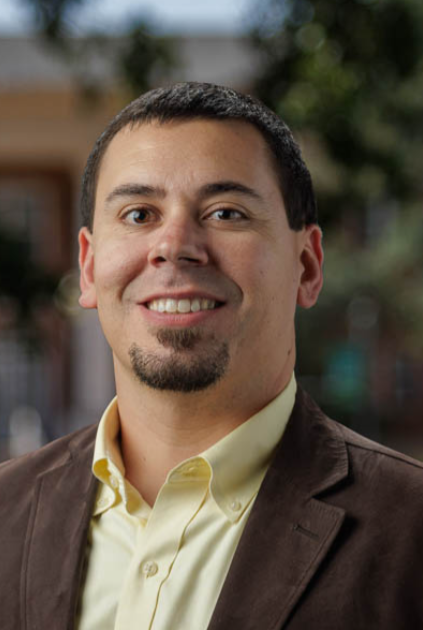
Paul A. Sanchez is Assistant Professor of Religion and Assistant Director of the Honors Program at Oklahoma Baptist University. His research centers on American religious history and he is currently writing a book titled: California Dreaming: Evangelical Christianity and American Culture in the Golden State (under contract with Wm. B. Eerdmans). He is a fellow at the London Lyceum and the Center for Pastor Theologians. He is a member of Redemption Church in South Oklahoma City.
Recent Posts
